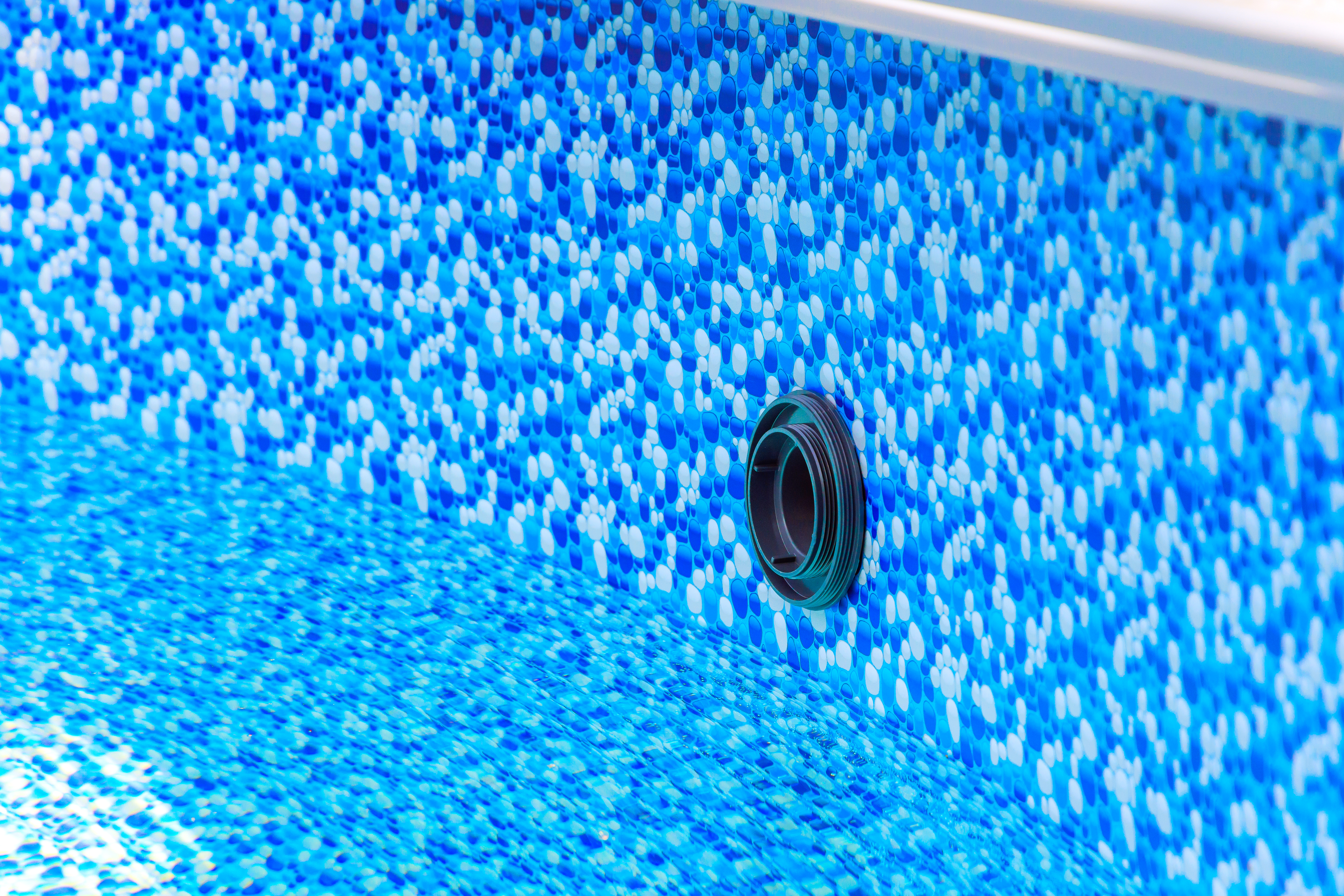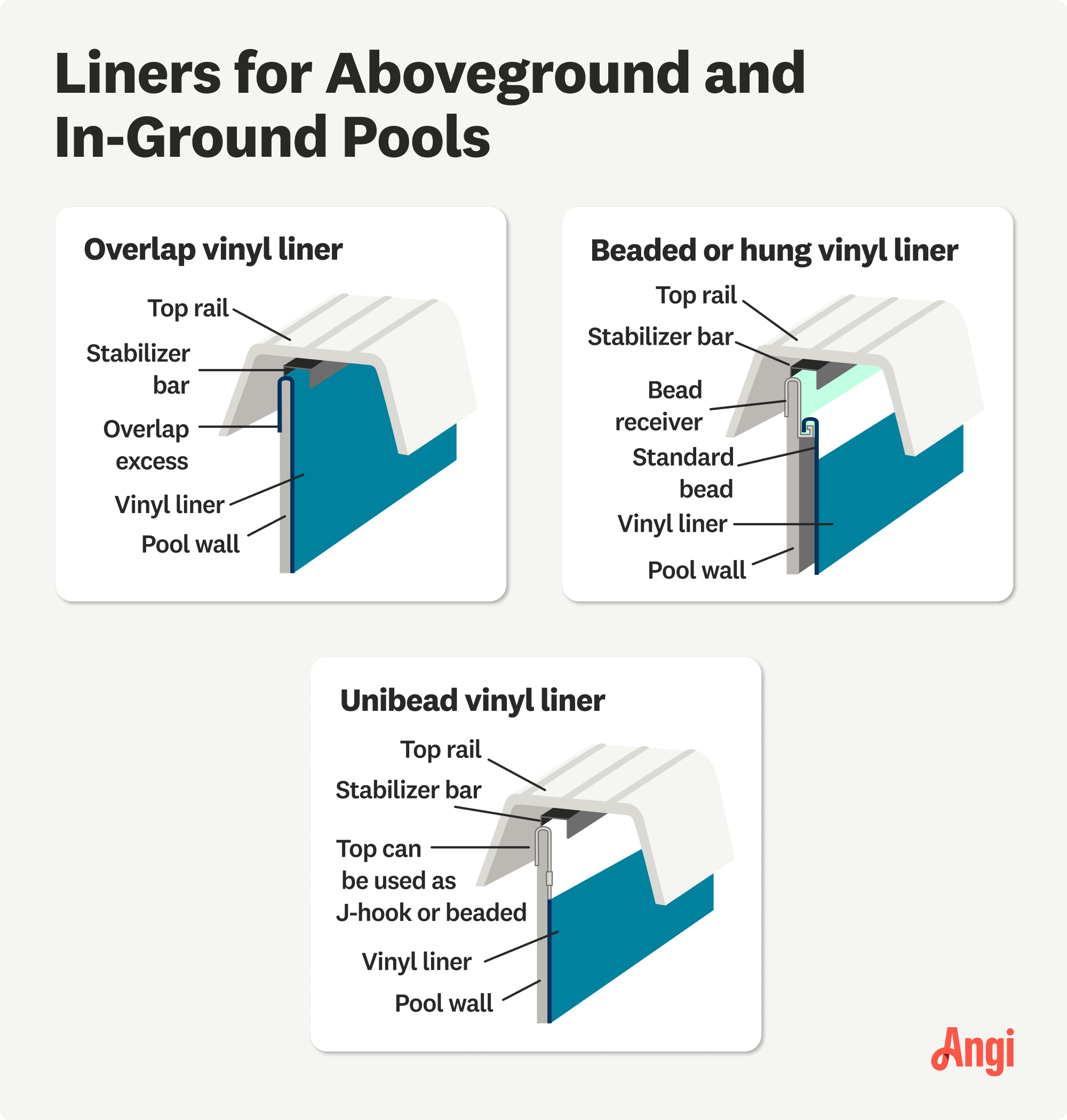
If you’ve been considering installing a new pool in the Buckeye State, this guide will help you understand inground pool costs in Columbus.
Pool liner replacement costs $3,596 on average in Washington, D.C., although it can range between $2,339 and $5,241. Call a pool liner installer to get a quote for your pool based on its size, shape, and liner type.


Pool liner replacement costs in Washington, D.C., are above the national average, so plan accordingly.
Schedule your pool liner replacement project between April to October for ideal weather conditions.
Many homes with pools in Washington, D.C., are high-end luxury properties, so maintaining your pool is a priority for preserving your home’s value.
Most in-ground liner replacements are not doable as DIY jobs, but a professional pool liner installer can take on the job.
The high cost of living in Washington, D.C., extends to pool maintenance, which is higher than the national average. The average pool liner replacement cost in Washington, D.C., sits at $3,596, with a low range of $2,339 and a high range of $5,241. While it’s an investment, getting your pool liner replaced is worthwhile so you can enjoy swim season with peace of mind. Here are all the details that go into determining the cost of your pool liner replacement.
Pool liner replacement is a fairly big task that takes one to three days to complete. Here are all the major factors to build into your budget.
Looking at the costs based on pool size is the first place to start. The larger the pool, the more materials, labor, and time it takes to install the liner. The following liner replacement costs are based on the national average:
| Pool Size (Feet) | Average Pool Liner Replacement Cost |
|---|---|
| 6x8 | $240 |
| 8x12 | $480 |
| 8x20 | $800 |
| 10x8 | $400 |
| 12x20 | $1,200 |
| 16x32 | $2,560 |
| 18x36 | $3,240 |
| 20x40 | $4,000 |
Your pool liner material will heavily impact your costs. Vinyl liners are the most cost-effective, and you can change the liner color or design when you replace them. Fiberglass liners are a mid-range option, while tile is the costliest.
| Pool Liner Material | Average Replacement Cost | Pros | Cons |
|---|---|---|---|
| Vinyl | $300–$4,000 | Easiest to replace | Requires the most replacements |
| Fiberglass | $1,000–$8,000 | Durable | Harder to repair |
| Tile | $2,000–$70,000 | Visually pleasing | Costly |

The type of pool liner you need changes your final price. Overlap and uni-bead liners are popular for aboveground pools. Overlap liners are placed on the pool and clamped along the wall, while uni-bead liners can be used in two different ways: The J-hook attaches to the edge of the pool wall, or the hook portion is trimmed to turn it into a beaded liner.
Beaded liners are commonly used for in-ground pools and attach to a track that’s installed on the pool walls. The track makes it easy to remove the old liner and install the new one.
| Liner Type | Average Materials Cost |
|---|---|
| Overlap liner | $200–$600 |
| Uni-bead liner | $400–$900 |
| Beaded liner | $500–$1,000 |
Most vinyl liners are 20 mil thick, but there are thicker options like 28, 30, and 40 mil for $300 to $500 more. Thicker vinyl can decrease the risk of tears, but that’s not always the case. In particular, custom pools have angles and corners that make it more challenging to fit thicker vinyl. Loose areas will wrinkle over time, increasing the chances of snags, tears, and leaks.
Due to colder temperatures that hover around freezing in January and February in Washington, D.C., it can be beneficial to get thicker vinyl, which is less likely to crack in harsh conditions. Ask your installer for guidance on choosing the right thickness for your vinyl liner.
Now that you know how the major cost factors impact pool liner replacement, consider how labor, permits, and taxes will add to your final cost.
Labor costs for replacing liners for aboveground pools are $250 to $800, while labor for an in-ground pool liner costs $1,000 to $2,500. Since pool liner installation costs more than the national average in Washington, D.C., expect to pay on the higher side of the price range.
It’s well worth paying a pro to do the job because it’s labor- and time-intensive. Hire a pool liner installer near you and let them do the heavy lifting.
The best time to install a new pool liner is when it’s at least 70 degrees Fahrenheit in dry weather. In Washington, D.C., these conditions start in late April, so your best bet is to schedule your installation during late April or early May. That way, you have the best likelihood of getting the project done before pros get busy. Plus, labor costs can increase during peak periods, so that’s one more incentive to plan ahead.
If you happen to get on the schedule a little later in the summer, your wait time could be three weeks or longer. On the other hand, the turnaround time is a few days to a week when it’s not as busy. If you wait until pool season is over, it’s possible to get the installation done as late as October, weather permitting.
Many pool companies service not just Washington, D.C., but also work in surrounding areas like northern Virginia and Maryland. You might get better rates through companies based out of Washington, D.C., so it helps to do some comparison shopping before signing a contract.
Your pool liner replacement will require an alteration and repair permit from the District of Columbia Department of Buildings, and the permit costs depend on the construction value.
You’ll need to pay the 6% sales tax for your pool liner replacement, which is lower than the national average.
Properly maintained pools can add value to your home, whereas a pool in disrepair can subtract value. In Washington, D.C., many homes on the market with pools are luxury properties. The actual return on investment (ROI) of your pool will depend on the neighborhood, home, and condition of your pool. It’s in your best interest to keep your pool in tip-top shape with regular liner replacements to attract potential buyers.
The return on investment for a pool varies widely—from as little as 5% to as much as 56%—with most homeowners seeing a return of 7%. Several factors influence this value, including the pool’s size, type, condition, local climate, neighborhood, and market conditions.
Home is the most important place on earth, which is why Angi has helped more than 150 million homeowners transform their houses into homes they adore. To help homeowners with their next project, Angi provides readers with the most accurate cost data and upholds strict editorial standards. We survey real Angi customers about their project costs to develop the pricing data you see, so you can make the best decisions for you and your home. We pair this data with research from reputable sources, including the U.S. Bureau of Labor Statistics, academic journals, market studies, and interviews with industry experts—all to ensure our prices reflect real-world projects.
Want to help us improve our cost data? Send us a recent project quote to [email protected]. Quotes and personal information will not be shared publicly.
From average costs to expert advice, get all the answers you need to get your job done.

If you’ve been considering installing a new pool in the Buckeye State, this guide will help you understand inground pool costs in Columbus.

Pool tile costs can vary widely depending on the size of your pool and the type of tile. Here’s how much it costs to retile a pool and other projects to think about.

Pool heater problems could point to many issues, some of which you can troubleshoot. Find out repair costs for heat pumps, natural gas, and solar pool heaters.

The key to maintaining an aboveground pool is using the right tools and chemicals for the job. Use this guide to learn how to clean an aboveground pool.

A broken pool light can be dangerous as well as inconvenient. Learn who to call to fix your pool light safely and correctly.

Swimming pool issues like algae or a clogged filter can happen to anyone. Learn more about common pool problems and how to fix them quickly and easily.